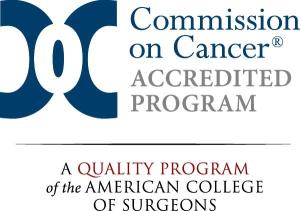Multiple Myeloma
When you or a loved one is diagnosed with blood cancer, it can be hard to know where to start. But we’re here to help you catch your breath and to support you through every step of treatment. Here, you‘ll find an accredited Comprehensive Community Cancer Program that offers many of the same treatment options—and advanced technologies—you’d find at an academic medical center, just close to home.

You’ll also have access to board-certified specialists who can develop a treatment plan that considers your overall health, unique preferences and treatment goals—and that treats your multiple myeloma holistically. That means you count on us to care not just for your physical health, but your mental and emotional health, too.
What is Multiple Myeloma?
Multiple myeloma is a blood cancer that develops in the body’s plasma cells, which are the white blood cells that produce disease- and infection-fighting antibodies called immunoglobulins.
Normal plasma cells are found in the bone marrow, which is the soft tissue inside bones. When they become cancerous and grow out of control, plasma cells make an abnormal protein called monoclonal immunoglobulin (also known as monoclonal protein, M-protein, M-spike or paraprotein).
Because abnormal plasma cells in people with multiple myeloma can crowd out normal plasma cells, it can lead to low blood counts, causing anemia (a shortage of red blood cells) and leukopenia (a shortage of white blood cells). Leukopenia can weaken the immune system’s ability to fight infection. Myeloma cells can also interfere with cells that strengthen the bones, leading to bone and calcium problems.
In addition, myeloma cells make an antibody that can damage the kidneys, harming the kidneys’ ability to function and sometimes even causing kidney failure.
Multiple Myeloma Types
There are two main types of multiple myeloma.
- Active multiple myeloma is generally used to describe cases where patients are actively experiencing signs and symptoms.
- Smoldering multiple myeloma (also sometimes called asymptomatic myeloma) is used to describe cases where patients are asymptomatic.
We also may categorize your multiple myeloma by its subtype, which are each named after the abnormal type of immunoglobulin (IgG) the body is making. These are classified as either a heavy chain or light chain myeloma.
Multiple Myeloma Risk Factors
A risk factor is something that increases your risk for developing a certain type of cancer. Some, like those related to genetics, you can’t change. But others, like risk factors related to lifestyle, you can.
Risk factors for multiple myeloma include:
- Age
- Family history
- Gender, with men slightly more likely to develop this cancer than women
- Having other plasma cell disorders
- Obesity
Multiple Myeloma Symptoms
Some people with multiple myeloma—those with smoldering multiple myeloma, for instance, don’t have symptoms. Others may experience:
- Bone problems, such as bone pain, weakness or frequent fractures
- High calcium levels that cause:
- Abdominal pain
- Confusion
- Constipation
- Dehydration
- Drowsiness
- Extreme thirst
- Frequent urination
- Kidney problems
- Loss of appetite
- Increased risk of infections, including pneumonia
- Kidney problems that cause weakness, shortness of breath or itchy skin
- Low blood counts that cause anemia and leukopenia
- Spinal cord compression, which can cause severe back pain that comes on suddenly and numbness and muscle weakness in the legs
Diagnosing Multiple Myeloma
We’ll look at your complete medical history and conduct a physical exam before performing more specific diagnostic procedures to determine if you have multiple myeloma. This will help us get a full picture of your general health and understand any past illnesses and treatments you may have had.
Some of the diagnostic tests we may use include:
- Biopsy, including bone marrow biopsy, fine needle aspiration (FNA) biopsy and core needle biopsy to get tissue samples.
- Blood tests, such as a complete blood count to check for the number of red blood cells, white blood cells, platelets and amount of hemoglobin in the blood. With multiple myeloma, the most common finding is a low red blood cell count.
We’ll also often perform blood chemistry tests to check the levels of creatinine, albumin, calcium and other electrolytes in the blood. Your creatinine level, for example, will show us how well your kidneys are working. Also, if your albumin levels are low, it may indicate myeloma. So may high calcium levels. - Imaging tests, such as bone X-ray, CT scan, MRI and PET scan.
- Other lab tests, such as urine tests to look for myeloma protein, quantitative immunoglobulins to measure the level of immunoglobulins in the blood and electrophoresis to look for monoclonal antibodies.
Treating Multiple Myeloma
Treatment for multiple myeloma is often complex.
Our multidisciplinary cancer team will work together, and with you, to create a personalized treatment plan. Your team may include medical, surgical or radiation oncologists, hematologists, dietitians and genetic counselors.
During your treatment, we may use:
- CAR T-cell therapy, which is a type of immunotherapy drug that helps the body’s immune system find and attack cancer.
- Certain drugs, such as the steroids dexamethasone and prednisone, alone or in combination with other drugs.
- Immunomodulating agents, including thalidomide, lenalidomide and pomalidomide.
- Monoclonal antibodies, which are manmade versions of proteins made by the body’s immune system to help fight infection.
- Proteasome inhibitors, which work by stopping enzyme complexes (or proteasomes) in cells from breaking down proteins that are important for controlling cell division.
- Radiation therapy to treat certain multiple myelomas that aren’t responding to other treatments.
We’ll also commonly recommend a stem cell transplant to treat multiple myeloma. This is often performed after we use drugs to treat the disease. During a stem cell transplant, you receive high-dose chemotherapy to kill the cells in the bone marrow, then get new, healthy blood-forming stem cells. Stem cell transplants can be autologous (using the patient’s own stem cells) or allogeneic (using a donor’s stem cells).
















